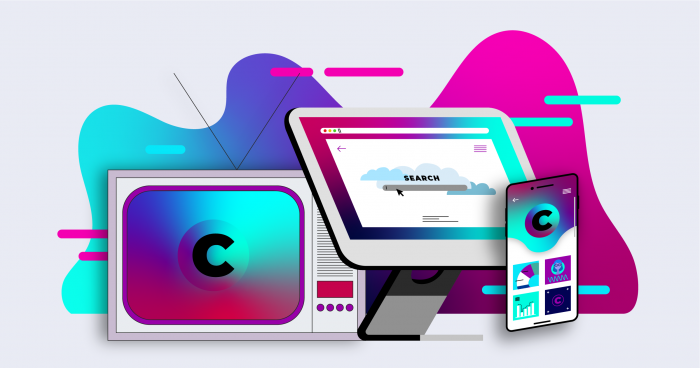With a great topic in mind and a perfect plan in place, you’re ready to host the webinar of your life. But there’s one problem: Nobody knows it’s happening. While there’s definitely something to be said for creating something great for the sake of creation, the whole reason we go through this process is to have other people see it and engage with it. Everyone on the Internet is vying for attention, so how are you supposed to get your target audience to notice you? We’ll cover some essential best practices to follow to help you increase attendance (and attract a high-quality audience) for your webinars.
Decide what success looks like
Before you start making plans for marketing this new webinar, set some goals and figure out the metrics that matter to you. Why exactly are you hosting this webinar, and what are you hoping to get out of it? Do you want to establish your company as a thought leader in a certain industry? Are you trying to generate new leads or increase your conversion rate? Are you simply hoping to demo a new product? If you have a clear priority in mind, it will be much easier to determine what metrics of success you should be tracking. Here are a few possibilities:
- Registrations: Are you happy with the number of people registered, and does that number align with the amount of money you’re spending to promote (if applicable)? The average webinar hovers around 260 registrations, with many touting as many as 500. These numbers may seem quite large—that’s because the number of webinar registrations doesn’t correlate with the number of people who actually attend.
- Attendance: Pick a more modest number for attendance. Only about 40-50% of all registrants actually attend the webinar—the average live attendance is 148 people. If you’re recording, expect viewers to continue to rise after the webinar has occurred—28% of webinar attendees said they signed up to do so after registration for that live webinar closed.
- Click Through Rate: How many people visit your webinar landing page and then decide not to register? Tracking your CTR helps you to figure out how to optimize your marketing materials, including your landing page, your email campaign, and your social media efforts.
Pick the right time
While there’s no universal “right” time to host a webinar, there are definitely times that should be avoided. Here are some statistics to keep in mind as you pick the best date and time for you:
- Avoid Mondays and Fridays: Both GoToWebinar and Hubspot agree that Thursday is the best day of the week for a webinar, with Wednesdays and Tuesdays following close behind. Whatever day you pick, just be sure to avoid the busy catchup (or the gentle glide into the weekend) that takes place on Monday and Friday.
- Mornings are great, but consider time zones: Surveys show that 10am-11am is a great hour for webinars—but that, of course, depends on your company’s time zone. If you’re based on the east coast, consider starting your webinars around noon or 1pm, so that the greatest majority of your audience can attend.
Nail the landing page
A beautiful, informative landing page is your greatest tool to draw visitors to sign up. Balance informative, alluring copy with a bold, clear design that fortifies your message. Here are a few aspects of your page’s copy, functionality, and design that can increase your registrations.
On the copy
- Pick a winning title: Stick to one of the tried and true title styles—a list, how-to, or 101—and bring some immediacy to it with the use of “new” or “trends.”
- Make it informative but light: Be sure to answer all the questions that your audience might have up front. The who, what, where, when, and why should all be addressed as succinctly as possible.
- Create urgency and value: You want to leave visitors with the sense that this is an important opportunity. Consider limiting your capacity to make people want to jump on the seats available. You’ll also get the added benefit of a more intimate, engaged audience.
- Consider leaving some information out: You don’t have to announce everything about your webinar all at once. Consider rolling out your speaker announcements over time to incentivize sign-ups closer to the date—additionally, that gives you another reason to send out an email update. And avoid mentioning that you’re planning to record it, as that might actually discourage people from signing up, knowing that they can catch up to it at a later date.
On the design
- Make the form stand out: The most important part of the registration page is, of course, the actual registration form. Use complementary colors to create enough contrast that the sign-up form and CTA button stand out. Blue and green tend to be popular choices on landing pages for a reason—people like them.
- Keep the form simple: It’s tempting to ask a lot of questions of your registrants. But all you really need on a sign-up form is a name and an email address. The fewer fields there are on a form, the more likely people will be to sign up. You’ll have other opportunities to get more specific information later.
- Embed a teaser video: Images are important on a landing page, but including a video on your registration page can increase your conversions by 80%.
- Heatmap your page: It’s always useful to see how visitors are actually engaging with the assets on your page. Heatmapping, or analyzing user behavior, can help you determine how to improve your page’s efficacy—by moving the CTA button, or changing its color, for example.
Strategize your emails
Over 50% of webinar registrations come from email, so the contacts in your robust email list should be some of the first people you target. Here are some statistics, and a simple schedule for you to follow, as you go about your email promotion.
The best time to send them
Use your intuition to find the best time to reach the majority of your audience—and there might not be only one answer. Perhaps you’ve found that Tuesday mornings are a great time to reach people, as this survey confirms. But maybe you also have a lot of luck on Friday afternoons, when most employees don’t have a lot going on, so they have additional time to check their inboxes. While email marketing has become a bit of a science, there’s not one fit for everyone.
Don’t forget the thank-you email
This goes for anyone who signs up, regardless of how they got there: The moment someone registers for your webinar, send them an email thanking them for doing so. Not only is this just good manners, it’s a smart way to establish credibility and trust with your registrants—and a great way to remind them that they have a new event to put in their calendar.
Two weeks out
- Send the official invite: This email should follow the format and structure of your registration page, with a clear CTA for where they can sign up. Surveys show that 17% of webinar attendees sign up more than two weeks before the presentation—so if you want to get a head start, you can begin even earlier.
- Study these email analytics to see if there’s any way you can customize your next round of email. You might want to separate your list into three categories: those who registered, those who opened your email but didn’t register, and those who didn’t interact with your email at all.
One week out
- Send a reminder: This is a good opportunity to make any announcements to incentivize sign-up. If you have another speaker who’s planning to make an appearance, now would be a good time to introduce them.
The week of
- Send a reminder the day before: Some marketers say sending an email the day before is a must—others say it’s overkill. Test this out for yourself, and track your results.
- Send a reminder the day of: Since 29% of your attendees won’t register for your webinar until the day of the event itself, this is a particularly important email to send.
- Send a thank you: Just because the webinar is done, doesn’t mean it’s over. The next day, send a final email to your lists—a thank you to those who attended and a reminder for those who didn’t make it, letting them know they can still catch the recording.
Raise awareness on your blog and social channels
Your webinar social campaign can, for the most part, follow your usual social media schedule—promote it on every channel where you have a following. Come up with a dedicated hashtag, and make sure that your speakers are marketing your event on their own personal channels.
But to gain even more traction, consider integrating your social plan with a content strategy. In the lead up to your webinar, you should start producing content for your blog that—if not totally about the topic of your webinar—is at least adjacent. Be sure to include a CTA in any blog post you create that sends visitors to the landing page. The more content you create around your webinar, the more opportunities you have to lead your readers—and your engaged followers on social—to your registration page.
On top of your usual social strategy, consider paid media assets, as well. Paid advertising still works—and can help you target audiences that would otherwise miss your webinar entirely. Neil Patel sings the praises of Facebook ads, but LinkedIn and Twitter are also great options.
Test, and try again
As you develop your webinar marketing strategy, it will become clear which of these tactics do and don’t work for you. Remember: you don’t have to make that decision alone. Consider sending out a survey to your audience or email list to figure out how to improve your marketing techniques. Wondering why so few people clicked on your reminder email? Ask them. The responses could help make you better at creating content that’s beneficial for your audience—which is really what putting on a good webinar is all about.



